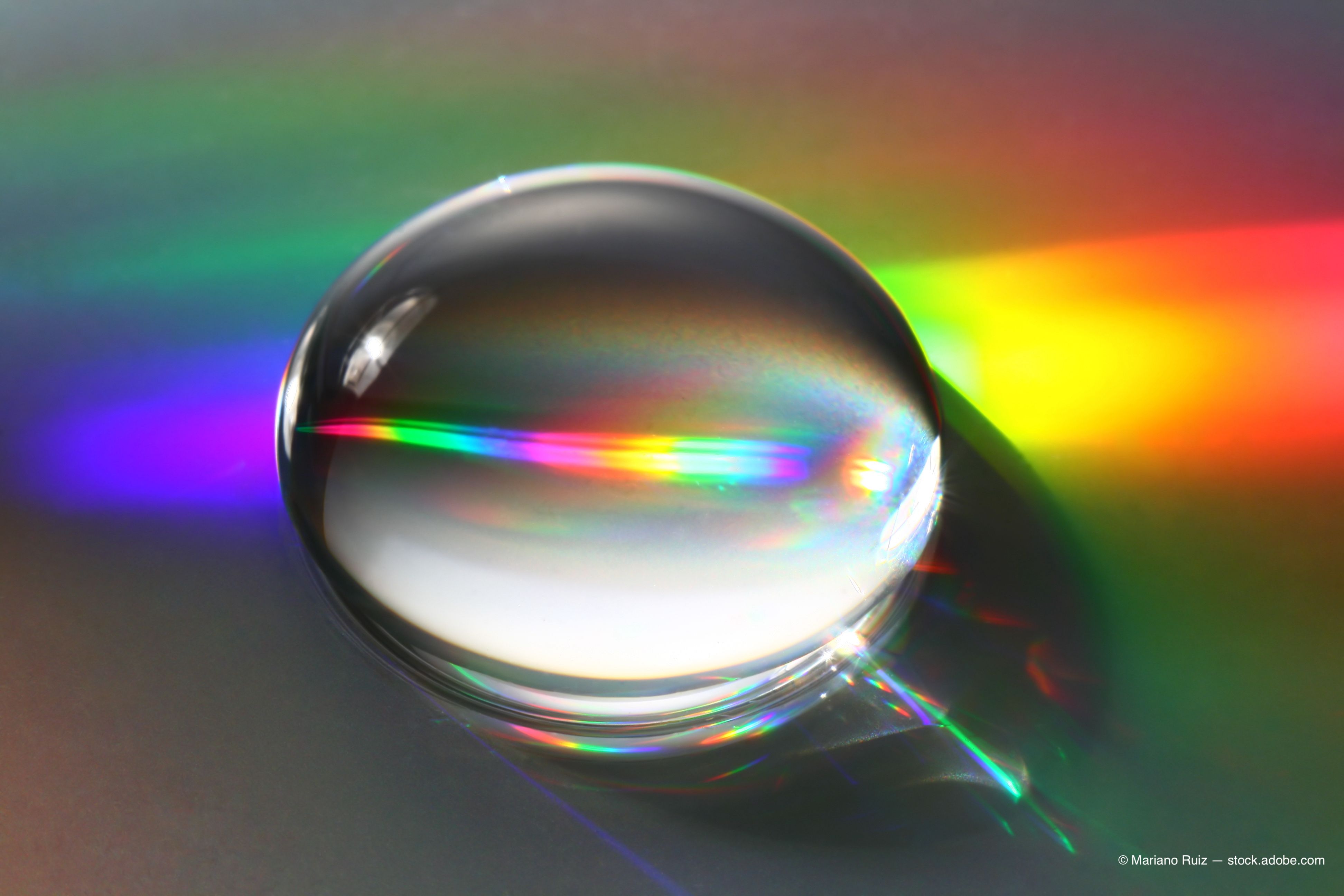Article
Analyzing the visual, non-visual benefits of VLF IOLs
Author(s):
Daniel H. Chang, MD, shares data on a recent study involving a new violet light-filtering chromophore in a preclinical computer simulation testing and randomized clinical study.

Chang

A note from Cynthia Matossian, MD, FACS, ABES: From time to time, I will invite a guest blogger to share topics of interest in this space.Today, I have asked Daniel H. Chang, MD, to share some data that he recently presented at the virtual American Academy of Ophthalmology (AAO) on a new violet-filtering IOL chromophore.1
Watch Dr. Chang's interview on this presentation
Special to Ophthalmology Times®
IOL chromophores are designed to filter transmission of a portion of the light spectrum, typically the short wavelength, high-energy ultraviolet, violet, and/or blue light that causes greater light scatter and retinal phototoxicity.
While all IOLs block ultraviolet light, there has long been controversy about the preferred visible violet and blue wavelengths to block, if any.
Study
In a recent publication, my colleagues and I reviewed the literature on violet- and blue-light filtering chromophores.2
We described how light has wavelength-specific effects on aspects of ocular and systemic health. While filtering high-energy light can improve patient outcomes and prevent reactive oxygen species (ROS) formation, it can also have a negative impact on scotopic vision and melanopsin function (important for circadian rhythm entrainment).
There is some overlap in the positive and negative effects of specific wavelengths, so it is important to filter as much unhealthy light while preserving as much healthy light as possible.
We therefore concluded that it was important to consider specific wavelength ranges of light filtration and not just approach the concept as a broad swath of non-specific high-energy light filtration.
Related: Visual outcomes of small-aperture IOL implant in post-laser refractive eyes
Assessment
In a pair of studies presented at AAO 2020, we evaluated a violet light-filtering (VLF) chromophore in preclinical computer simulation testing as well as in a randomized clinical study.
We hypothesized that a chromophore with a steep cutoff that filters violet light below 450 nm and retains blue light between 450-500 nm could achieve many of the benefits of broad high-energy light filtration while reducing potential unwanted side effects.
In the preclinical assessment, light transmission curves for colorless, VLF, and blue light filtering (BLF) IOLs (Figure 1) as well as action spectra for scotopic vision performance, ROS formation, and melanopsin function were obtained from the published literature.3-5
Transmission curves for different light-filtering IOLs show that the VLF IOL has a steep cutoff at 435 nm and blocks most of the unwanted violet wavelengths below 450 nm, while preserving the important blue wavelengths between 450-500 nm. Note the steep cutoff allows for such selective filtration while the broad cutoff of the power-dependent BLF IOL blocks a fair amount of healthy blue light while still transmitting a significant amount of harmful violet light. Image courtesy: Daniel H. Chang, MD

The combined spectra were then integrated with the spectrum of a typical light source over the 380 to 700 nm wavelength range in narrow 10 nm steps.
Related: Extended depth-of-field IOLs: Clarifying current nomenclature
Compared to BLF lenses, the VLF lenses retain more scotopic vision (90.5% vs 69.3%); prevent ROS formation at a similar level (88.0% vs. 87.6%); and retain greater melanopsin function (74.8% vs 53.1%).
Clinical study
In the clinical study, 240 patients at 12 US sites were implanted bilaterally with VLF or colorless, UV-only filtering IOLs. Visual outcomes and patient questionnaire responses were evaluated.
Significantly more of the VLF-implanted patients (52.8%) than the colorless IOL patients (44.4%) reported no difficulty driving at night (p=0.017). The VLF patients (89.8%) were also more likely than the colorless IOL patients (79.8%) to say they had no frustration with their vision (p=0.033).
Related: Small-aperture single-piece IOL could fill unmet need in patients
Conclusion
Taken together, this research suggests that a VLF can prevent the transmission of hazardous short-wavelength light that contributes to ROS formation, improve visual comfort, and importantly still retain the wavelengths contributing to good scotopic vision and melanopsin function.
While no chromophore is perfect for all circumstances, it is more important not to filter wavelengths that may be useful for good visual function and health.
One can always wear sunglasses in bright lighting, but one can never regain the wavelengths that are blocked by an implanted IOL chromophore.
See more coverage from AAO 2020
Disclosure: Dr. Chang is a consultant to Johnson & Johnson Surgical Vision and his co-authors on the poster are employees of Johnson & Johnson Surgical Vision.
References
1. Chang D, Pastuck T, Rosen R, et al. Violet and blue light: Impact of high-energy light on vision and health. J Ophthalmic Stud 2020;3: dx.doi.org/10.16966/2639-152X.119.
2. Marie M, Bigot K, Angebault C, et al. Light action spectrum on oxidative stress and mitochondrial damage in A2E-loaded retinal pigment epithelium cells. Cell Death and Disease 2018;9:287.
3. Cuthbertson FM, Peirson SN, Wulff K, et al. Blue light-filtering intraocular lenses: review of potential benefits and side effects. J Cataract Refract Surg 2009;35:1281-1297.
4. Mainster MA, Turner PL. Blue-blocking IOLs decrease photoreception without providing significant photoprotection. Surv Ophthalmol 2010;55:272-289.
Newsletter
Don’t miss out—get Ophthalmology Times updates on the latest clinical advancements and expert interviews, straight to your inbox.




